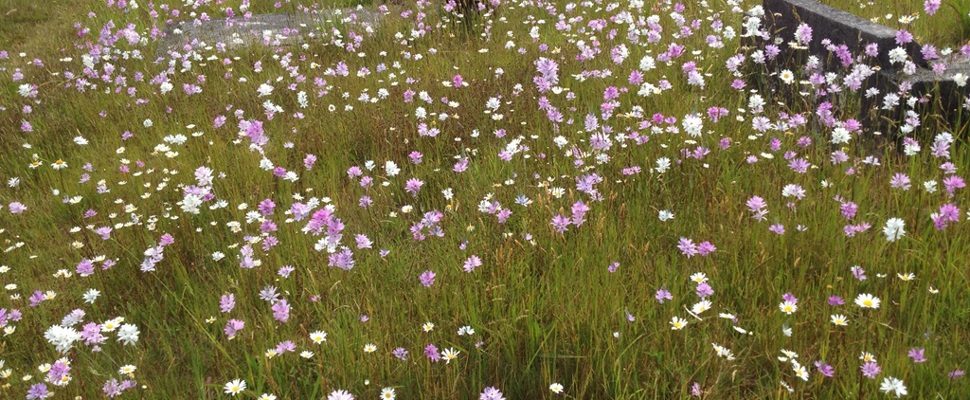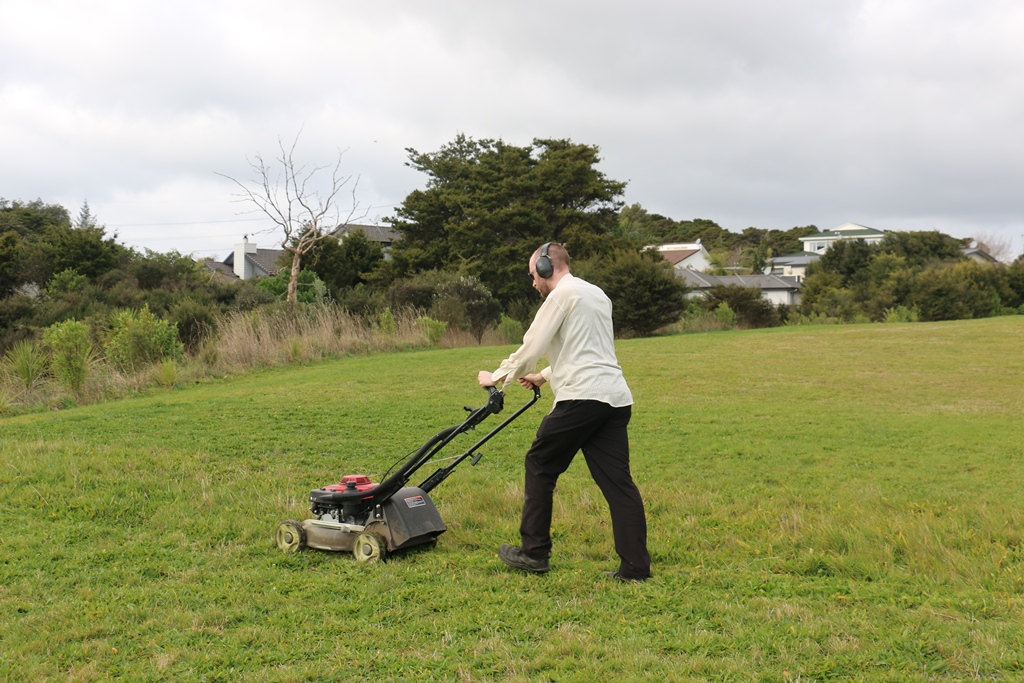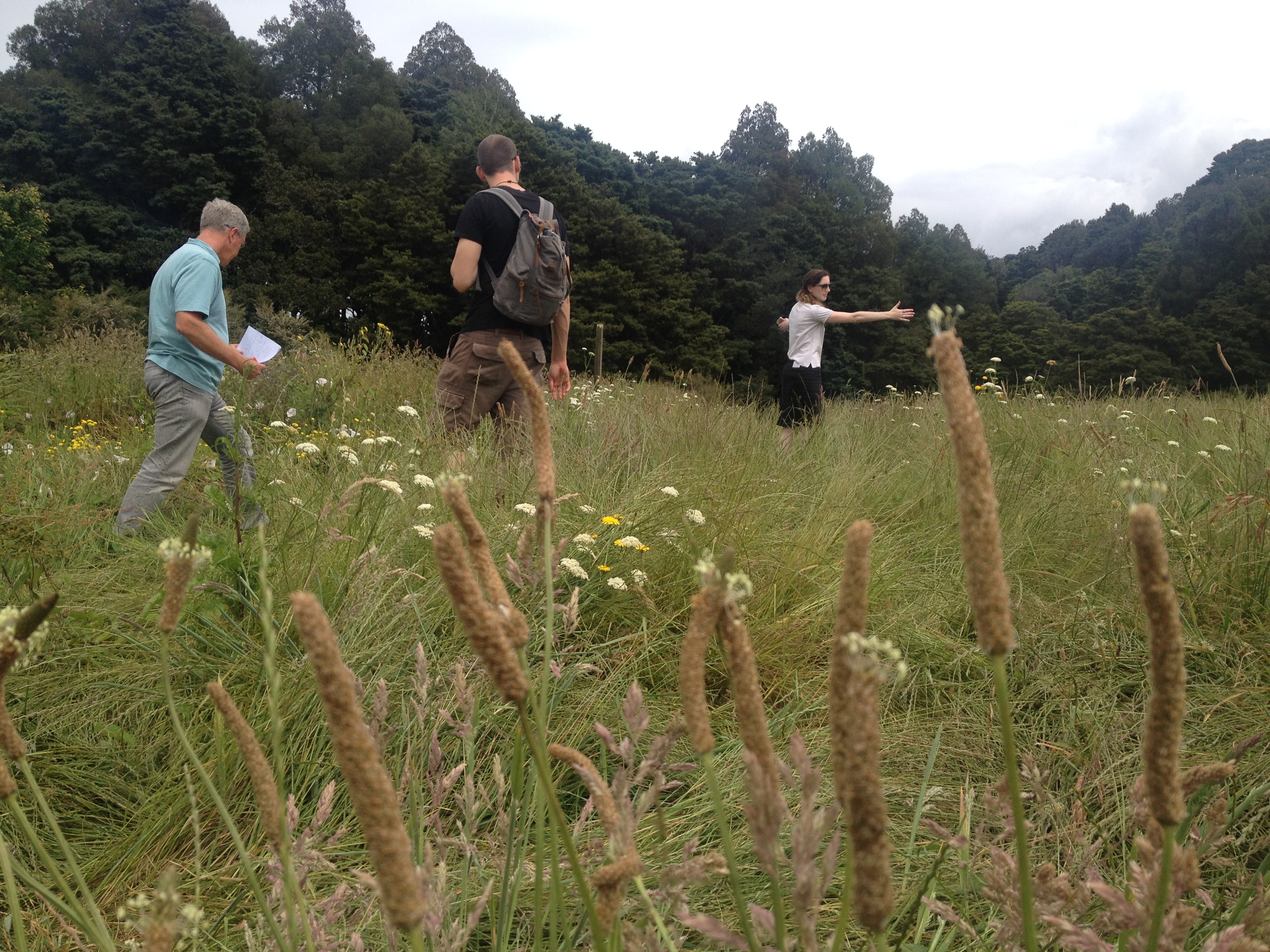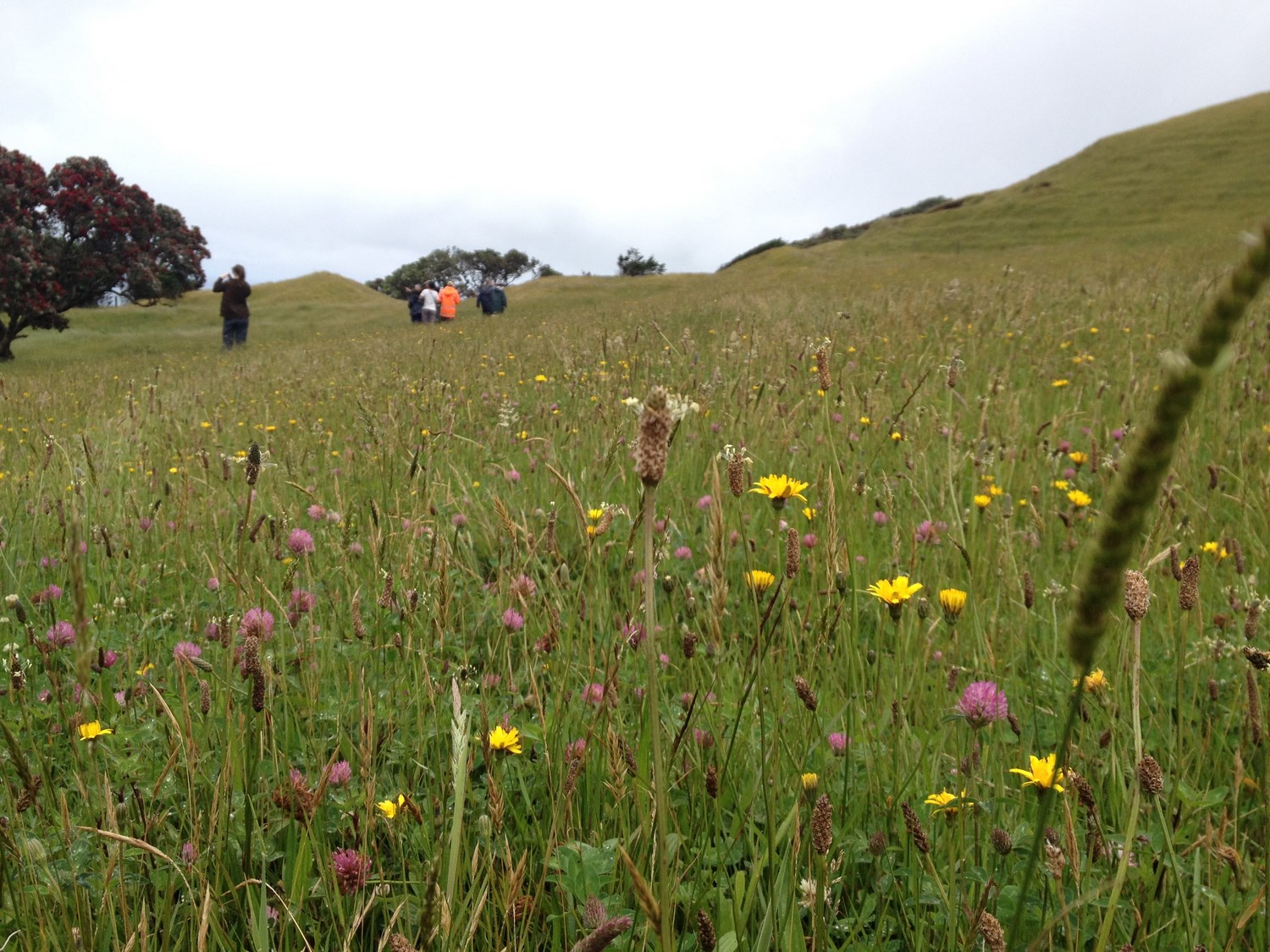
To mow or not to mow
Trial to achieve a sustainable meadow
Is it possible to reduce lawn mowing and still provide usable spaces that people like and think are attractive, that provide habitats for more plants, birds and bugs, and are better at soaking up rainwater? Essentially that’s the aim of our meadows research in conjunction with University of Auckland (and funded by the Friends of Auckland Botanic Garden). Long grass can be unattractive and worrisome e.g. in summer dry long grass may be a fire risk. Our research focuses on ways to encourage more plant diversity in a lawn, preferably smaller grasses and herbs, not long grass.

The methods we are testing, to see if we can encourage more short pretty plants in the lawn, are mowing at different frequencies (e.g. once a year, once every two months, once after flowering etc.) as well as seeing if we can lower the fertility of the soil. There is lots of evidence diverse ‘lawns’ are encouraged by low soil fertility. We are testing applying sugar, sawdust and woodchips to lower soil fertility.

Did you know?
Most people understand mowers give off pollutants. But fewer realise that even cut grass gives off greenhouse gases when it is cut (it’s that “cut grass” smell) and these gases contribute as much to greenhouse gases as the emissions from the motor of the mower. Recent research in Australia and the USA suggest emissions from the cut grass should be monitored as part of smog calculations for cities.
Most people mow their lawns to fit in with their neighbours. People notice when we don’t mow. Keeping the lawn clipped short is a way we fit in with our neighbours and communicate things like our pride and protection of property values. This is an active area of research around the world and shows the importance of social and behaviour change research to environmental issues in society. Research (mostly from overseas) says:
- having a well-maintained lawn improves the relationship between neighbours
- people who do not conform can be ostracized (or have their lawns mowed ‘for them’ in the middle of their night)
- most people (>80%) think that neighbours have expectations for their garden
- keeping lawns mowed is as important to some people as eating dinner with their family
- residents cite fear of neighbours disapproval as reasons for their lawn care practices
Pictorial meadows are colourful naturalistic wildflower gardens, designed to look like wild nature. Planting pictorial meadows is one way you can replace lawns but they aren’t necessarily self-sustaining. We are keen to find a name for low mow and no mow systems and we quite like the term “freedom lawns”.
'Cues to care' are effects created by mown edges and paths through low mow areas to signal to people that the “unmown” look is intentional and not a sign of neglect.
In California, councils are paying people to remove their lawns because of the amount of water wasted every year on lawns.
